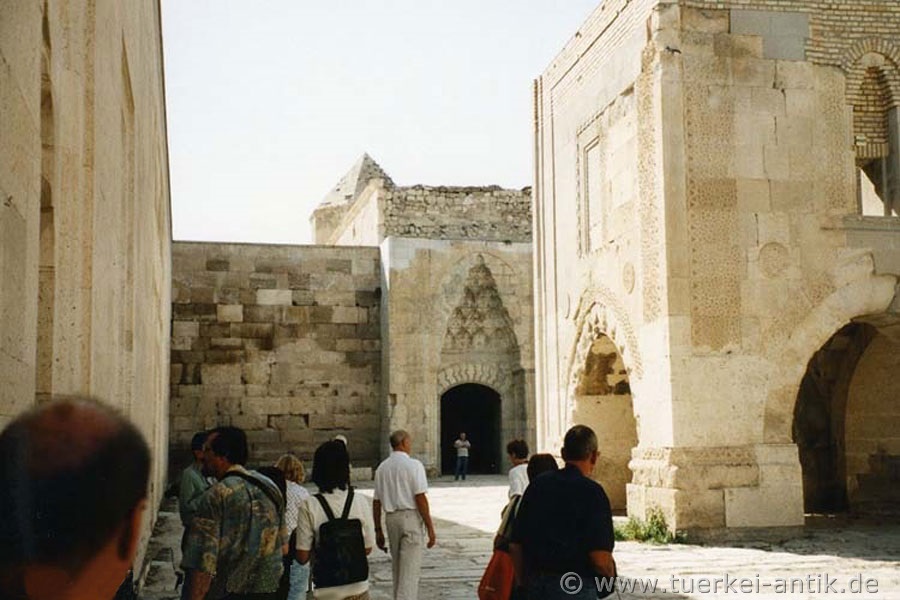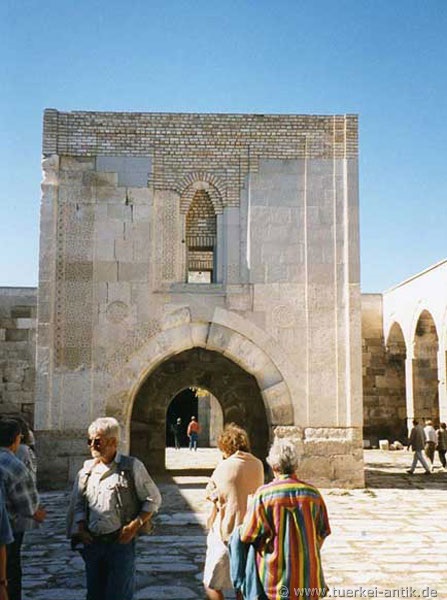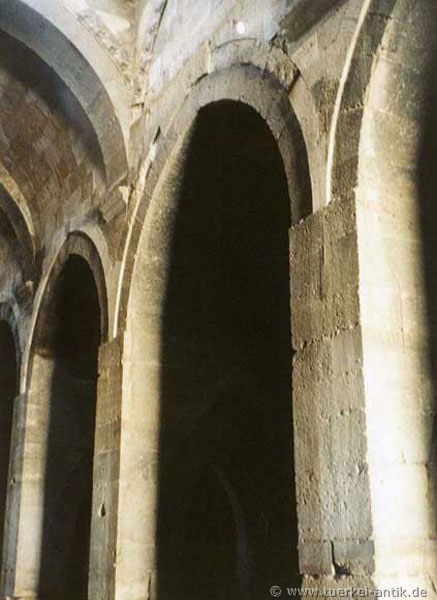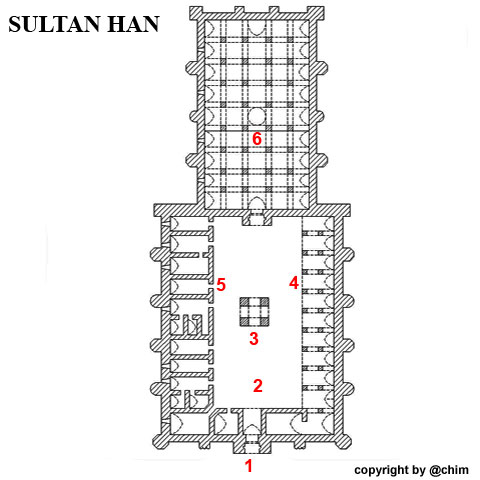 |
| Sultanhanı in Cappadocia | |||||||
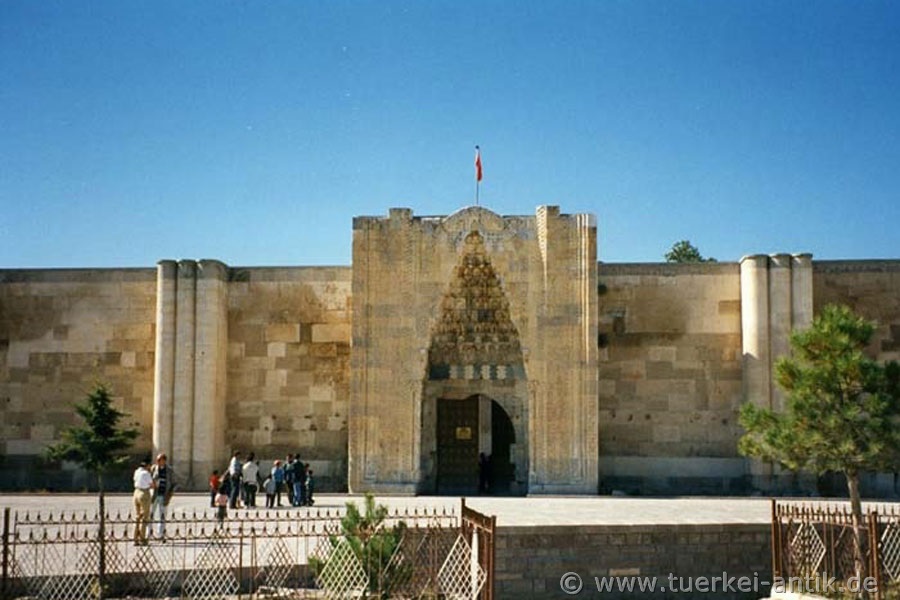 |
|
||||||
| Caravanserai Sultanhanı | |||||||
|
Sultanhanı is a caravanserai on the D300 highway between Konya and Aksaray. 43 km before Aksaray. Built between 1232 and 1236 by Sultan Alaeddin Keykubat, it grew rapidly due to its central location on the historic Silk Road and the Seljuk Caravan Route and is today the largest caravanserai in Asia Minor. |
|||||||
|
|
|||||||
|
The Portal |
|||||||
|
The caravanserai Sultanhanı is the largest of the twelve caravanseries built by the Sultans of Rum between the former capital Konya and the second largest city Kayseri. For these hostels, which provided people and animals with everything they needed, the merchants had to pay an annual tax. The building lies in the middle of the village Sultanhanı. One enters it through a richly decorated portal in the northeast and arrives in a rectangular courtyard, in the middle of which stands a small mosque. Opposite the entrance portal, the stables are connected to the courtyard square, the floor area of which again corresponds approximately to the size of the courtyard. The roof vault of the stables is supported by 32 columns, which divide the room into several naves. Here the pack animals and their companions were stored during the cold season. During the warmer months people slept on the roof, which they could reach by stairs along the courtyard wall. |
|||||||
|
|
|||||||
|
The courtyard with the mosque |
|||||||
|
|
|||||||
|
The mosque in the inner courtyard |
|||||||
|
|
|||||||
|
In the vest corner of the courtyard lies the Hamam, followed by storerooms, kitchens and a few small living rooms. On the opposite long side of the square there are storage rooms for the goods. |
|||||||
|
|
|||||||
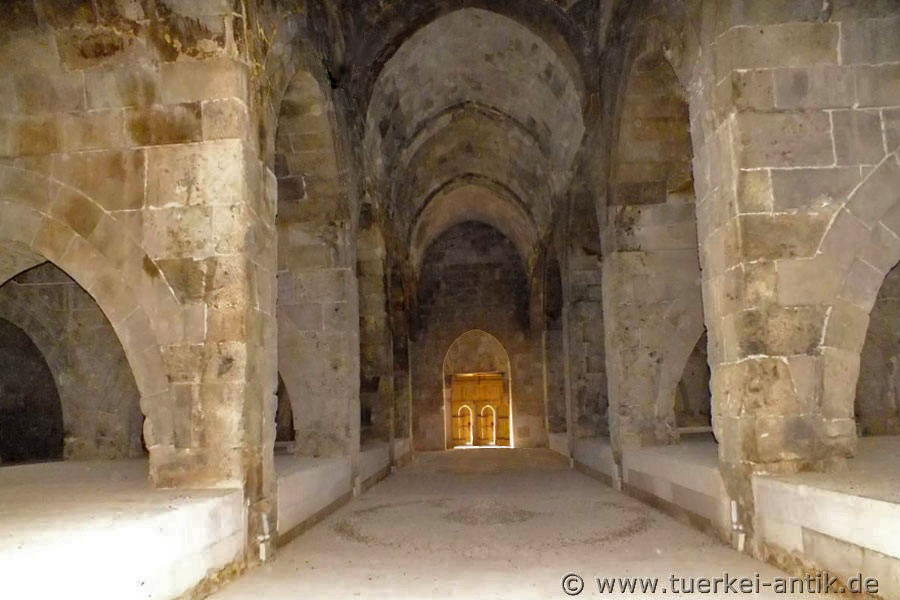 |
|||||||
|
The closed hall |
|||||||
|
|
|||||||
|
A closed hall 42 metres long and 29 metres wide adjoins the inner courtyard on the west side. The height of the central aisle is reminiscent of a nave. A central dome, based on pendants, rises above the vault and underlines the sacred character of the hall. |
|||||||
|
|
|||||||
|
|
|||||||
|
Under the central dome |
|||||||
|
|
|||||||
|
|||||||
| Photos: @chim | |||||||
| Translation aid: www.DeepL.com/Translator | |||||||
| Source: Wikipedia and others | |||||||
|
|
|||||||

